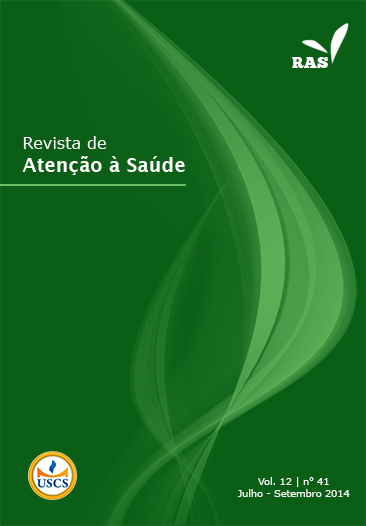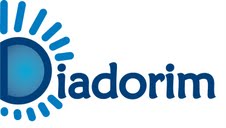CARACTERÍSTICAS FUNCIONAIS PULMONARES E QUALIDADE DE VIDA DE PACIENTE COM INSUFICIÊNCIA CARDÍACA
DOI:
https://doi.org/10.13037/rbcs.vol12n41.2311Keywords:
Testes de Função Respiratória. Tolerância ao Exercício. Qualidade de Vida. Insuficiência Cardíaca.Abstract
Introdução: Insuficiência Cardíaca (IC) é uma doença crônica onde pacientes apresentam intolerância ao exercício associada aos sintomas de dispneia, fraqueza da musculatura inspiratória e fadiga muscular. Objetivo: Analisar a função pulmonar e qualidade de vida de pacientes com insuficiência cardíaca. Metodologia: Série de casos realizado de maio a dezembro de 2012 no Hospital Universitário Walter Cantídio com 10 indivíduos com IC. Foram incluídos indivíduos com classe funcional II e III, de ambos os sexos, fração de ejeção menor que 45% e sedentários. Foram avaliados a função pulmonar através da espirometria e manovacuometria (pressão inspiratória máxima – Pimáx) e qualidade de vida pelo Short form-36 (SF-36) e Minnesota Living With Heart Failure Questionnaire (MLHFQ). Resultado: Dos 10 indivíduos, 70% eram do sexo masculino, idade média de 51,30 + 10,99 anos. Quanto à função pulmonar, 100% (n=10) apresentaram um padrão obstrutivo e a média da Pimáx foi de -45,10 + 16,15 cmH2O. No SF-36, sete escores estão abaixo de 50 com comprometimento maior do aspecto físico. A média do MLHFQ foi de 44,50. Conclusão: A função pulmonar e qualidade de vida dos pacientes com IC classe funcional II e III estão comprometidas. Novos estudos devem ser conduzidos envolvendo maior número de sujeitos para verificar a reprodutibilidade destes achados.
Downloads
References
1. Barnes TA. Core textbook of respiratory care practice. 2ª ed. Missouri: Mosby Inc.; 1994.
2. Hunt SA, Abraham WT, Chin MH, Feldman AM, Francis GS, Ganiats TG et al. ACC/AHA 2005 guideline update for the diagnosis and management of chronic heart failure in the adult: a report of the American College of Cardiology/American Heart Association Task Force on Practice Guidelines (Writing Committee to Update the 2001 Guidelines for the Evaluation and Management of
Heart Failure). Circulation. 2005; 112(12):154-235.
3. Stewart S, Jenkins A, Buchan S, McGuire A, Capewell S, McMurray JJ. The current cost of heart failure to the National Health Service in the UK. Eur J Heart Fail. 2002; 4(3):361-71.
4. Cotter G, Moskovitz Y, Milovanov O, Salah A, Blatt A, Krakover R et al. Acute heart failure: a novel approach to its pathogenesis and treatment. Eur J Heart Fail. 2002; 4(3):227-34.
5. Powers SK, Coombes J, Demirel H. Exercise training-induced changes in respiratory muscles. Sports Med. 1997; 24(2):120-31.
6. Meyer FJ, Zugck C, Haass M, Otterspoor L, Strasser RH, Kübler W et al. Inefficient ventilation and reduced respiratory muscle capacity in congestive heart failure. Basic Res Cardiol. 2000; 95(4):333-42.
7. Dall’ago P, Chiappa GR, Guths H, Stein R, Ribeiro JP. Inspiratory muscle training in patients with heart failure and inspiratory muscle weakness: a radomized trial. J Am Coll Cardiol. 2006; 47(4):757–63
8. Brasil. Resolução Conselho Nacional de Saúde, n.º 196, de 10 de outubro de 1996. Aprova diretrizes e normas regulamentadoras de pesquisa envolvendo seres humanos. Diário Oficial da União. 1996; 201(Seção 1). p. 21082.
9. Hammond MD, Bauer KA, Sharp JT, Rocha RD. Respiratory muscle strength in congestive heart failure in congestive heart failure. Chest. 1990; 98(5):1091-4.
10. Harrington D, Coast AJS. Skeletal muscle abnormalities and evidence for their role in symptom generation in chronic heart failure. Eur Heart J. 1997; 18(12):1865-72.
11. Meyer FJ, Mathias MB, Zugck C, Kirschke A, Scellberg D et al. Respiratory muscle dysfunction in congestive heart failure. Circulation. 2001; 103:2153-2158.
12. Hughes PD, Polkey MI, Lou Harris M, Coats AJS, Moxham J, Green M. Diaphragm strength in chronic heart failure. Am J Respir Crit Care Med. 1999; 160(2):529-34.
13. Evans AS, Watson L, Hawkins M, Cowley AJ, Johnston DA, Kinnear WJM. Respiratory muscle strenght in chronic heart failure. Thorax. 1995; 50(6):625-28.
14. Forgiarini-Junior LA, Rubleski A, Garcia D, Tieppo J, Vercelino R, Dal Bosco A et al. Avaliação da força muscular respiratória e da função pulmonar em pacientes com insuficiência cardíaca. Arq Bras Cardiol. 2007; 89(1):36-41.
15. Witt C, Borges AC, Haake H, Reindl I, Kleber FX, Baumann G. Respiratory muscle weakness and normal ventilator drive in dilative cardiomyopathy. Eur Heart J. 1997; 18(8):1322-8.
16. Gonzaga FMG. Função pulmonar em pacientes portadores de insuficiência cardíaca congestiva associada a distúrbios respiratórios do sono [tese]. São José dos Campos: Universidade do Vale do Paraíba; 2006.
17. Johnson B, Olson LJ, O’Malley KA, Allison TG, Squires RW. Pulmonary function in patients with reduced left ventricular function. Chest. 2001; 120(6):1869-76.
18. Nogueira IDB, Servantes DM, Nogueira PAMS, Pelcerman A, Salvetti XM, Salles F et al. Correlação entre qualidade de vida e capacidade funcional na insuficiência cardíaca. Arq Bras Cardiol. 2010; 95(2):238-243.
19. Riegel B, Moser DK, Glaser D, Carlson B, Deaton C, Armola R et al. The Minnesota living with heart failure questionnaire: sensitivity to differences and responsiveness to intervention intensity in a clinical population. Nurs Res. 2002; 51(4):209-18.
20. Sneed NV, Paul S, Michel Y, VanBakel A, Hendrix G. Evaluation of 3 quality of life measurement tools in patients
with chronic heart failure. Heart Lung. 2001; 30(5):332-40.
21. Meyer K, Laederach-Hofmann K. Effects of a comprehensive rehabilitation program on quality of life in patientswith chronic heart failure. Prog Cardiovasc Nurs. 2003; 18(4):169-76.
Downloads
Published
Issue
Section
License
Copyright (c) 2014 Clarissa Bentes de Araujo Magalhães, Patricia Carvalho Bezerra, Thiago Brasileiro de Vasconcelos, Maria de Jesus Ferreira Marinho, Andrea da Nóbrega Cirino Nogueira, Raimunda Hermelinda Maia Macena, Vasco Pinheiro Diógenes Bastos

This work is licensed under a Creative Commons Attribution-NonCommercial-NoDerivatives 4.0 International License.
Policy Proposal for Journals offering Free Delayed Access
Authors who publish in this magazine agree to the following terms:
- Authors maintain the copyright and grant the journal the right to the first publication, with the work simultaneously licensed under a Creative Commons Attribution License after publication, allowing the sharing of the work with recognition of the authorship of the work and initial publication in this journal.
- Authors are authorized to assume additional contracts separately, for non-exclusive distribution of the version of the work published in this magazine (eg, publishing in institutional repository or as a book chapter), with the acknowledgment of the authorship and initial publication in this journal.
- Authors are allowed and encouraged to publish and distribute their work online (eg in institutional repositories or on their personal page) at any point before or during the editorial process, as this can generate productive changes, as well as increase impact and citation of the published work (See The Effect of Open Access).









